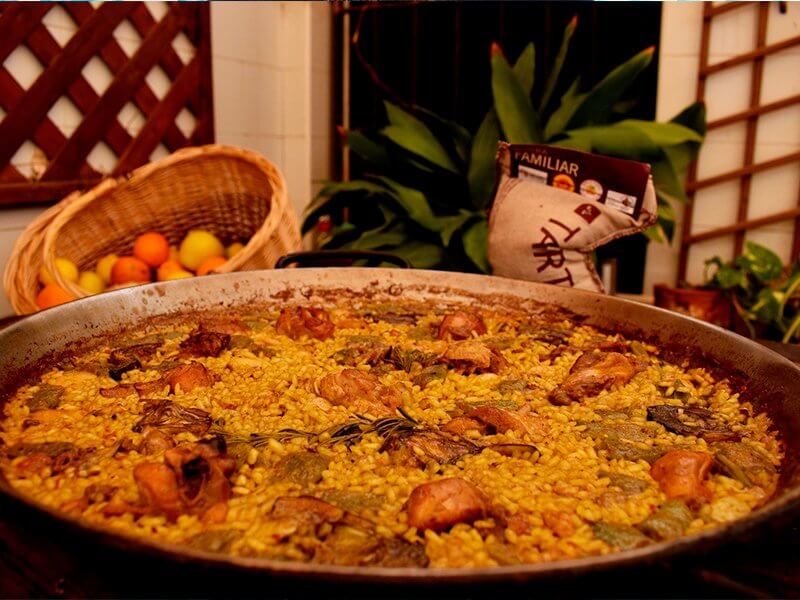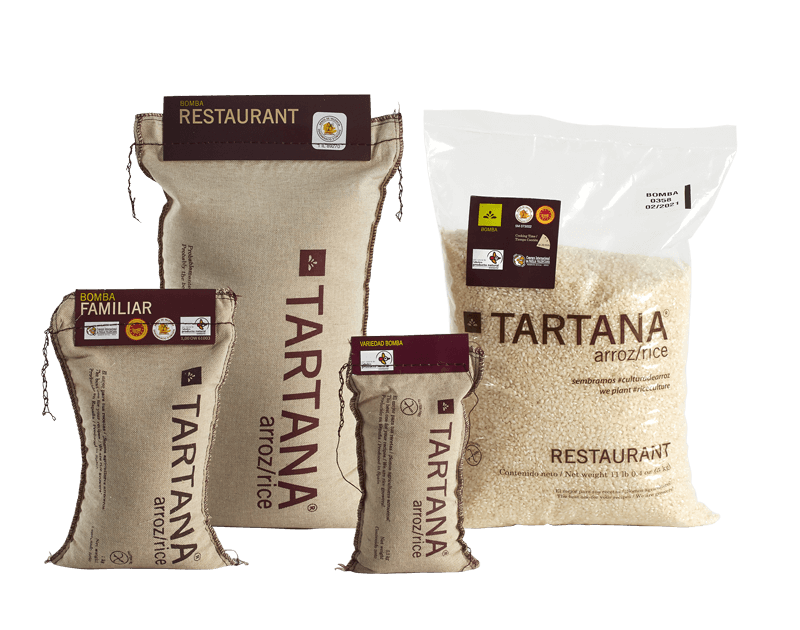WHAT IS THE BEST PAELLA RICE?

PAELLA RICE SHOULD IDEALLY BE A SHORT GRAIN THAT ABSORBS LIQUID VERY WELL, WITHOUT SPLITTING DURING THE COOKING PROCESS. IT SHOULD NOT STICK TOO READILY TO THE BOTTOM OF THE PAN, SO IT COOKS PROPERLY AND CAN HELP DEVELOP THE UNIQUE FLAVOUR AND ‘SOCARRAT’
What is the best rice for paella?
The variety of rice that has all the best characteristics and delivers the very best quality is La Bomba. One of the oldest and most highly prized grains in Spain, La Bomba de Albufera DOP is recognized as the best rice for paella and is able to absorb up to three times more liquid than many other varieties.

Farmed in the Albufera National Park about 20km south of Valencia, our La Bomba de Albufera DOP rice has been grown and cultivated by five generations of the Gorets family. Still transplanting, weeding and packing by hand, the environment and eco-system is just as important to the family as is the quality of their 100% natural finished product.
La Bomba de Albufera DOP paella rice 500g is available to buy from Victus Emporium and why not try to make a classic paella for yourself?
Chicken and rabbit paella
Serves 2
Ingredients
1 white onion
2 cloves of garlic
4 chicken thighs (skinned and de-boned)
4 pieces of rabbit (ask your butcher to prepare. You should get 6-8 pieces, then freeze the rest)
1lt fish stock (home made if possible, if not you can buy it and mix with jar or tin of lobster bisque)
160g La Bomba de Albufera DOP paella rice
2 whole fresh artichokes (use only the hearts) or ½ jar of grilled artichoke hearts. Or 5 whole runner beans, whatever is in season.
50g frozen peas
1 whole lemon
½ red pepper (optional, for decoration rather than flavour)
1tsp dried mountain rosemary
1 whole red chili
1tsp Hot smoked paprika
10 saffron strands
3 bay leaves
Seasoning
Glug of olive oil.
Method
Dice the onion and crush the garlic. Then place in a small paella pan or large frying pan with the paprika and a glug of olive oil on a low heat, too cook slowly and not burn.
Whilst the onions and garlic are cooking, put the fish stock in a saucepan and add the rosemary, whole chili, saffron and bay leaves and bring to the boil then turn down to a simmer.
The onions & garlic should be soft and cooked, so remove and put into a bowl.
Place the chicken and rabbit in a mixing bowl and season with salt & pepper. Mix thoroughly, to ensure each piece is well seasoned.
Return the paella / frying pan back and turn up to a medium heat adding another glug of olive oil.
Seal all the chicken and rabbit, turning regularly to ensure good colour. Cook for about 10 minutes and turn the heat down a little if you think it is too hot.
Whilst the meat is cooking, cut the artichoke in 8 wedges or four slices if using beans. Cut the red pepper into 4 or 6 strips and the lemon into 6 or 8 wedges, removing and visible pips.
Add the onions & garlic back to the pan and spread the meat out evenly. Then place the artichoke or beans and peas equally in the gaps. Then sprinkle the rice evenly all over.
DO NOT TOUCH THE MEAT OR STIR THE PAN AGAIN
Then, using a ladle or jug, pour in the simmering fish stock, gently knocking off and rice that is sat on top of the meat, so that all the rice is absorbed. Then place the lemon wedges and red pepper equally around the pan so it look decorative.
Bring to the boil then turn to a very low simmer.
Cook for 20-25 mins. This is the tricky and key part to getting the paella right and achieving the much prized ‘socarrat’ at the bottom of the pan. This is why you must not mix or stir the pan. The moisture will bubble away, but don’t switch it off straight away, keep listening as you hear the moisture cook out. All the natural sugars will start to stick to the bottom of the pan and develop a wonderful flavour. After the moisture has visibly gone, simmer for another 5 minutes and then take it off and relax for 5 minutes, before going in……..If you haven’t quite got the ‘socarrat’, remember for next time and cook for another minute or two.
